Related Research Articles

Cyc is a long-term artificial intelligence project that aims to assemble a comprehensive ontology and knowledge base that spans the basic concepts and rules about how the world works. Hoping to capture common sense knowledge, Cyc focuses on implicit knowledge. The project began in July 1984 at MCC and was developed later by the Cycorp company.
Knowledge representation and reasoning is a field of artificial intelligence (AI) dedicated to representing information about the world in a form that a computer system can use to solve complex tasks, such as diagnosing a medical condition or having a natural-language dialog. Knowledge representation incorporates findings from psychology about how humans solve problems and represent knowledge, in order to design formalisms that make complex systems easier to design and build. Knowledge representation and reasoning also incorporates findings from logic to automate various kinds of reasoning.

Douglas Bruce Lenat was an American computer scientist and researcher in artificial intelligence who was the founder and CEO of Cycorp, Inc. in Austin, Texas.
The Web Ontology Language (OWL) is a family of knowledge representation languages for authoring ontologies. Ontologies are a formal way to describe taxonomies and classification networks, essentially defining the structure of knowledge for various domains: the nouns representing classes of objects and the verbs representing relations between the objects.
In artificial intelligence, symbolic artificial intelligence is the term for the collection of all methods in artificial intelligence research that are based on high-level symbolic (human-readable) representations of problems, logic and search. Symbolic AI used tools such as logic programming, production rules, semantic nets and frames, and it developed applications such as knowledge-based systems, symbolic mathematics, automated theorem provers, ontologies, the semantic web, and automated planning and scheduling systems. The Symbolic AI paradigm led to seminal ideas in search, symbolic programming languages, agents, multi-agent systems, the semantic web, and the strengths and limitations of formal knowledge and reasoning systems.
Semantic similarity is a metric defined over a set of documents or terms, where the idea of distance between items is based on the likeness of their meaning or semantic content as opposed to lexicographical similarity. These are mathematical tools used to estimate the strength of the semantic relationship between units of language, concepts or instances, through a numerical description obtained according to the comparison of information supporting their meaning or describing their nature. The term semantic similarity is often confused with semantic relatedness. Semantic relatedness includes any relation between two terms, while semantic similarity only includes "is a" relations. For example, "car" is similar to "bus", but is also related to "road" and "driving".

Deborah Louise McGuinness is an American computer scientist and researcher at Rensselaer Polytechnic Institute (RPI). She is a professor of Computer, Cognitive and Web Sciences, Industrial and Systems Engineering, and an endowed chair in the Tetherless World Constellation, a multidisciplinary research institution within RPI that focuses on the study of theories, methods and applications of the World Wide Web. Her fields of expertise include interdisciplinary data integration, artificial intelligence, specifically in knowledge representation and reasoning, description logics, the semantic web, explanation, and trust.
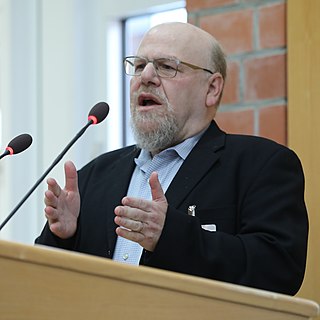
James Alexander Hendler is an artificial intelligence researcher at Rensselaer Polytechnic Institute, United States, and one of the originators of the Semantic Web. He is a Fellow of the National Academy of Public Administration.
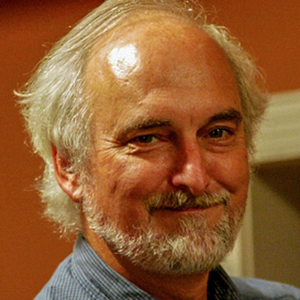
Timothy Wilking Finin is the Willard and Lillian Hackerman Chair in Engineering and is a Professor of Computer Science and Electrical Engineering at the University of Maryland, Baltimore County (UMBC). His research has focused on the applications of artificial intelligence to problems in information systems and has included contributions to natural language processing, expert systems, the theory and applications of multiagent systems, the semantic web, and mobile computing.

Carole Anne Goble, is a British academic who is Professor of Computer Science at the University of Manchester. She is principal investigator (PI) of the myGrid, BioCatalogue and myExperiment projects and co-leads the Information Management Group (IMG) with Norman Paton.

Ian Robert Horrocks is a professor of computer science at the University of Oxford in the UK and a Fellow of Oriel College, Oxford. His research focuses on knowledge representation and reasoning, particularly ontology languages, description logic and optimised tableaux decision procedures.
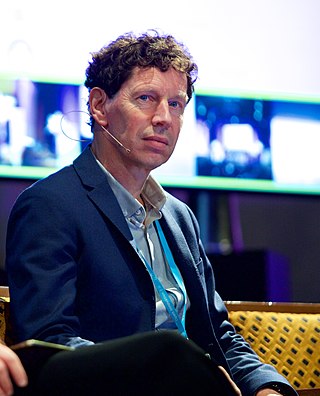
Frank van Harmelen is a Dutch computer scientist and professor in Knowledge Representation & Reasoning in the AI department at the Vrije Universiteit Amsterdam. He was scientific director of the LarKC project (2008-2011), "aiming to develop the Large Knowledge Collider, a platform for very large scale semantic web reasoning."
Frames are an artificial intelligence data structure used to divide knowledge into substructures by representing "stereotyped situations".
Semantic analytics, also termed semantic relatedness, is the use of ontologies to analyze content in web resources. This field of research combines text analytics and Semantic Web technologies like RDF. Semantic analytics measures the relatedness of different ontological concepts.
James Frederick Allen is an American computational linguist recognized for his contributions to temporal logic, in particular Allen's interval algebra. He is interested in knowledge representation, commonsense reasoning, and natural language understanding, believing that "deep language understanding can only currently be achieved by significant hand-engineering of semantically-rich formalisms coupled with statistical preferences". He is the John H. Dessaurer Professor of Computer Science at the University of Rochester.
Amit Sheth is a computer scientist at University of South Carolina in Columbia, South Carolina. He is the founding Director of the Artificial Intelligence Institute, and a professor of Computer Science and Engineering. From 2007 to June 2019, he was the Lexis Nexis Ohio Eminent Scholar, director of the Ohio Center of Excellence in Knowledge-enabled Computing, and a professor of Computer Science at Wright State University. Sheth's work has been cited by over 48,800 publications. He has an h-index of 117, which puts him among the top 100 computer scientists with the highest h-index. Prior to founding the Kno.e.sis Center, he served as the director of the Large Scale Distributed Information Systems Lab at the University of Georgia in Athens, Georgia.
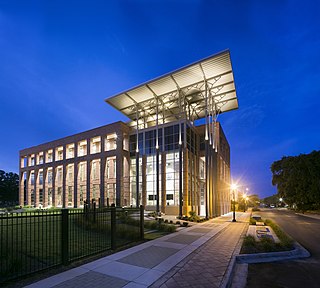
The Florida Institute for Human & Machine Cognition (IHMC) is a not-for-profit research institute of the State University System of Florida, with locations in Pensacola and Ocala, Florida. IHMC scientists and engineers investigate a broad range of topics related to building systems aimed at amplifying and extending human cognitive, physical and perceptual capacities.
William Aaron Woods, generally known as Bill Woods, is a researcher in natural language processing, continuous speech understanding, knowledge representation, and knowledge-based search technology. He is currently a Software Engineer at Google.
Gregory Grefenstette is a French-American researcher and professor in computer science, in particular artificial intelligence and natural language processing. As of 2020, he is the chief scientific officer at Biggerpan, a company developing a predictive contextual engine for the mobile web. Grefenstette is also a senior associate researcher at the Florida Institute for Human and Machine Cognition (IHMC).
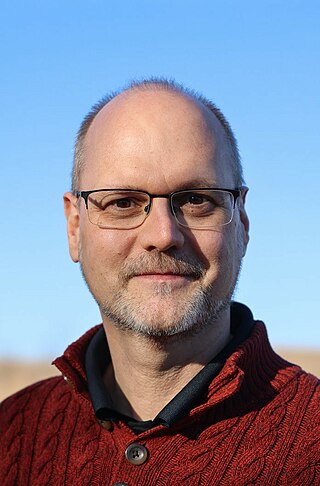
Pascal Hitzler is a German American computer scientist specializing in Semantic Web and Artificial Intelligence. He is endowed Lloyd T. Smith Creativity in Engineering Chair, one of the Directors of the Institute for Digital Agriculture and Advanced Analytics (ID3A) and Director of the Center for Artificial Intelligence and Data Science (CAIDS) at Kansas State University, and the founding Editor-in-Chief of the Semantic Web journal and the IOS Press book series Studies on the Semantic Web.
References
- 1 2 The naive physics manifesto in Michie, Donald (1979). Expert systems in the micro-electronic age. Edinburgh: Edinburgh University Press. ISBN 978-0-85224-381-7.
- ↑ Hayes, Patrick (1995). "The second naive physics manifesto". Computation & Intelligence. AAAI Press. pp. 567–585. ISBN 978-0262621014.
- ↑ Pat Hayes at the Mathematics Genealogy Project
- ↑ "Pat Hayes". IHMC | Institute for Human & Machine Cognition. Retrieved 9 October 2024.
- ↑ Hayes, Patrick John (1973). Semantic trees: new foundations for automatic theorem proving (PhD thesis). University of Edinburgh. hdl:1842/8115. EThOS uk.bl.ethos.586181.

- ↑ Pat Hayes at DBLP Bibliography Server
- ↑ Hayes, P.; Eskridge, T. C.; Saavedra, R.; Reichherzer, T.; Mehrotra, M.; Bobrovnikoff, D. (2005). "Collaborative knowledge capture in ontologies". Proceedings of the 3rd international conference on Knowledge capture - K-CAP '05. p. 99. doi:10.1145/1088622.1088641. ISBN 978-1595931634. S2CID 15663316.
- ↑ Carroll, J. J.; Bizer, C.; Hayes, P.; Stickler, P. (2005). "Named graphs, provenance and trust". Proceedings of the 14th international conference on World Wide Web - WWW '05. p. 613. CiteSeerX 10.1.1.1.2197 . doi:10.1145/1060745.1060835. ISBN 978-1595930460. S2CID 207156699.
- ↑ Clark, P.; Hayes, P.; Reichherzer, T.; Thompson, J.; Barker, K.; Porter, B.; Chaudhri, V.; Rodriguez, A.; Thomere, J.; Mishra, S.; Gil, Y. (2001). "Knowledge entry as the graphical assembly of components". Proceedings of the international conference on Knowledge capture - K-CAP 2001. p. 22. CiteSeerX 10.1.1.24.9465 . doi:10.1145/500737.500745. ISBN 978-1581133806. S2CID 663883.
- ↑ Carroll, J. J.; Bizer, C.; Hayes, P.; Stickler, P. (2005). "Named graphs". Web Semantics: Science, Services and Agents on the World Wide Web. 3 (4): 247. doi:10.1016/j.websem.2005.09.001.
- ↑ Jensen, C. S.; Dyreson, C. E.; Böhlen, M.; Clifford, J.; Elmasri, R.; Gadia, S. K.; Grandi, F.; Hayes, P.; Jajodia, S.; Käfer, W.; Kline, N.; Lorentzos, N.; Mitsopoulos, Y.; Montanari, A.; Nonen, D.; Peressi, E.; Pernici, B.; Roddick, J. F.; Sarda, N. L.; Scalas, M. R.; Segev, A.; Snodgrass, R. T.; Soo, M. D.; Tansel, A.; Tiberio, P.; Wiederhold, G. (1998). "The consensus glossary of temporal database concepts — February 1998 version". Temporal Databases: Research and Practice. Lecture Notes in Computer Science. Vol. 1399. p. 367. doi:10.1007/BFb0053710. ISBN 978-3-540-64519-1.
- ↑ Hayes, P.J., Ford, K.M. and Agnew, N., 1994. On babies and bathwater: A cautionary tale. AI magazine, 15(4), pp.15-15.
- ↑ Shanahan, Murray (1997). Solving the frame problem: a mathematical investigation of the common sense law of inertia. MIT Press. p. 45. ISBN 978-0-262-19384-9 . Retrieved 12 November 2010.
- ↑ Hayes, Patrick J.; John McCarthy (1969). "Some philosophical problems from the standpoint of artificial intelligence". Machine Intelligence. 4: 463–502.
- ↑ Hayes, P. J., & Ford, K. M. (1995). The Simon Newcomb Awards. AI Magazine, 16(1), 11. https://doi.org/10.1609/aimag.v16i1.1120
- ↑ Fikes, R.; Hayes, P.; Horrocks, I. (2004). "OWL-QL—a language for deductive query answering on the Semantic Web". Web Semantics: Science, Services and Agents on the World Wide Web. 2: 19–29. CiteSeerX 10.1.1.67.1967 . doi:10.1016/j.websem.2004.07.002.
- ↑ "Tropical House". 5 July 2022.
- ↑ "Pat Hayes". IHMC | Institute for Human & Machine Cognition. Retrieved 9 October 2024.